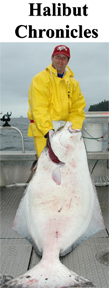Wild Chinook salmon versus hatchery origin fish continues to be a hot, hugely expensive and contested topic. In one corner you’ll find a bunch of “wild only” proponents. In the other corner you’ll find sports anglers like me that believe a Chinook is a Chinook is a Chinook. For more than 100 years Washington State, Tribal, and the Federal Government have been releasing billions of hatchery Chinook into our rivers and streams. many of those plants were made “out of basin” into other rivers. Simply put, the genetics have drastically been altered.
The Chinook salmon in the rivers of the Puget Sound basin from the Elwha to the Nooksack have been listed under the Endangered Species Act (ESA) as “Threatened” species. Puget Sound, for Chinook management purposes, has been listed as an Evolutionary Significant Unit (ESU) and each of the 22 rivers is considered a distinct population segment (DPS). Under the ESA, the ESU listing can’t be removed until all of the DPS’s are fully recovered.
With a broad based designation like this, where you include “naturally spawned” Chinook the ESU listing does the trick of gaining control over the fishery. Control is power, power is money, money is power. From my point of view the ESU listing is nothing more than a bureaucrat’s ridiculous power grab of a public fishery and steals the right of opposing viewpoints as well as opposing science.
The idea of wild Chinook has created a profitable industry with state and federal fisheries managers who have made careers out of trying to restore allegedly genetically pure Chinook into the rivers. With the billions of Chinook released within the Puget Sound basin, I don’t think a “wild” fish in the classic sense of pure genetics going back to the 1890’s before Washington built its first hatchery. Interestingly, it is my understanding that NOAA will consider the offspring of two hatchery fish spawning in a river as “wild” when they come out of the gravel because they have an adipose fin. If one considers a hatchery as an artificial extension of the river system, then what is a “wild” fish? Using hatchery production and not clipping all the release would, over time, allow the re-building of natural spawning stocks while allowing for a marked selective fishery. It would be a lot faster than waiting the estimated 300 to 500 years to restore our salmon runs if they are left to their own devices.
The ESA process can be a money maker for private companies. ESA listings can provide contracts for restoration, environmental impact studies, etc. One of the big winners of the “wild only” policy are non-profit groups that use the issue as a key fund raiser for their organizations. They would likely deny this allegation, but it is my opinion this is true. Groups like Long Live The Kings, Wild Fish Conservancy, Trout Unlimited, and Save Our Wild Salmon to name just a few. While these groups do some good with their monies, they stand firm with their goal, wild salmon only. Imagine what would happen to these non-profits if our fisheries managers switched their policy to embrace hatchery production. They would either shrink in size or go away with their stated goals gone or they would continue to fight for wild only policies. That last word is what this is really about, policies. Policies are where the money is made and power created. Without wild only policies money and power would diminish greatly. Follow the money and you will end up at “wild only” policies.
A July 2006 NOAA reported that 14 Puget Sound river systems have extinct runs of Chinook salmon. Science proves this fact, that Chinook DNA has been heavily changed over the last 100 plus years. But fisheries managers continue to preach and dictate their views and beliefs that hatchery Chinook are inferior. This position actually contradicts the Fed’s ESA listing. Again, this issue is about control, money and power. Ask yourself what would happen if these fishery managers and non profits would do if policy changed to hatchery friendly solutions instead of failed “wild only” policies?
Lets take a look at a parallel — Humans and Chinook.
For decades the United States of America has fought hard to eliminate racism. Yes, I’m comparing Chinook salmon with humans. Humans are humans but have different DNA based on ethnicity. Chinook are Chinook. They have the ability to use their DNA based on their home river systems. Humans at one time were genetically “pure” within their unique ethnicity. Crazy people like Hitler and others wanted a superior white race, even after thousands of years of genetic mixing. He was crazy but his policies gave him power.
Diversity is something we as a nation embrace. Diversity brings new DNA and can strengthen a population and has strengthened our population. Trying to maintain a “pure” population, whether human or Chinook salmon simply makes no sense, unless you are trying to maintain control of power and money. Frankly, I’m sick of the salmon racists that currently control our fisheries policies and practices. The time is now to embrace hatchery Chinook where hatchery Chinook have been present for years. If such a river actually exists with a pure strain of wild Chinook, fine, leave that system alone or do a captive brood stock program.
Again, a Chinook, is a Chinook is a Chinook, whether it is wild, natural spawned or hatchery origin. Regardless of a Chinook’s origin, the DNA is still Chinook. If we humans were stuck with current fishery policies we would be stuck marrying our brothers, sisters and cousins, a concept that is silly and extremely unhealthy. Diversity is healthy within any population, human or fish.
The value of a non-existent wild Chinook is zero unless you are close-minded fishery managers. The value of a hatchery Chinook that swims within the river is quantifiable and valued among all user groups as well as eagles, trees and all other life that benefits from tangible, real Chinook salmon that swim our rivers and oceans.
Also note, Mother Nature has a natural way to bring new DNA to different river systems via a “stray rate.” Approximately 10% of a river’s Chinook stock will stray to another system. This has been going on forever and is Nature’s way of keeping Chinook stocks healthy. Diversity is good and so are hatchery Chinook.
Fisheries managers will say, “Trust our science.”
Sadly, I no longer trust their lopsided science. A friend of mine who once worked for NMFS as a fisheries biologist told me stories of his projects. He said he was instructed to find a way to prove their hypothesis. He said they would conduct study after study until they got the results they were instructed to find. Unfortunately trusting science to fisheries managers with agendas becomes tainted. And the so-called peer reviews are equally suspect as they too have been taught and programmed to believe wild only is best. With this line of thinking what other conclusion would there be other than wild only Chinook?
Well that’s my opinion, a very cynical but logical approach to fishery management. If we change policy we can change the outcome of Chinook for centuries.
Don’t be a salmon racist!
Let’s end the crisis funding for Chinook salmon. No crisis, no funding and there’s no money in recovered fisheries. Chinook fisheries management is in the recovery only stage with no reason to cross the finish line.
Please support hatchery Chinook production. Hatchery Chinook salmon will provide enough fish for every user group and keep the orca whales fed at the same time. When hatchery production decreased so did orca populations. The time is now to increase hatchery production — orcas and anglers can’t wait 300 to 500 years for wild stocks to return if they ever do.

John Beath, Editor Salmon Chronicles
Please read my other blogs about this issue
The above link proves in basin Chinook hatchery plants throughout Puget Sound as well as other important links about hatchery Chinook.




